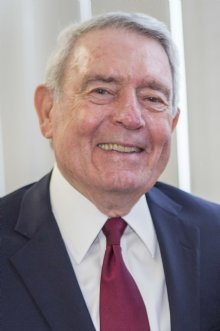Overview
Dan Rather’s 1991 book I Remember gathers a lifetime of scenes, voices, and hard-earned lessons from a reporter who spent decades at the center of American public life. Rather doesn’t offer a straight-line chronology so much as a mosaic of recollections, moving from his Texas boyhood to the anchor desk, from small-town rituals to geopolitical crises. The throughline is memory as a living archive: how personal roots shape professional choices, how journalism’s daily grind intersects with the country’s history, and how character is forged under pressure.
Roots in Texas
Rather traces his beginnings to working-class Houston, where the rhythms of church, school, and neighborhood provided a moral compass. He recalls a childhood illness that kept him indoors and close to the radio, the medium that first taught him the music of news and the power of a well-turned sentence. Family portraits matter here: a father whose grit and modesty framed success as showing up and doing the job, a mother who prized curiosity and insisted on clear speech and clean facts. Teachers, coaches, and local broadcasters populate these early pages, standing in for the mentors who nudged him toward a craft he would practice for the rest of his life.
Becoming a Reporter
The book lingers on his apprenticeship in Texas newsrooms and stations, where he learned to write for the ear, chase a lead, and develop sources. Rather anchors the turning point in Hurricane Carla, when his on-air use of weather radar conveyed urgency and helped push reluctant residents to higher ground. The segment did more than introduce him to a national audience; it crystallized his sense of journalism as a public service measured in lives as well as ratings.
Witness to History
From there the memories widen to civil rights flashpoints, where he grappled with how to witness without inserting himself, and to the shock of Dallas in 1963, when he and colleagues scrambled to verify what could scarcely be believed. Vietnam occupies a charged space, not just as battlefield reportage but as a study in ambiguity, where bravery and confusion often lived side by side. Back in Washington, he recounts the corrosive dance between press and power during the Nixon years, and how tough questions are easier to demand in theory than to deliver in a live, high-stakes exchange. The 1980s bring the Challenger disaster and Iran-Contra, along with the friction of accountability interviews that tested both the subject and the interviewer.
The Anchor Chair
Succeeding Walter Cronkite put Rather at the bull’s-eye of expectation. He writes about the fatigue of the daily broadcast, the rituals of script and rewrite, and the particular solitude of speaking into a lens to millions of unseen listeners. Praise and criticism arrived in equal measure; he treats both as weather to be endured rather than forecast to be believed. Running beneath is a practical ethic: show your work, correct your mistakes, and remember that the people on screen for two minutes live with the consequences for years.
People and Places
The book is thick with portraits beyond famous names. Cameramen who took risks for a better angle, producers who fought for an extra beat of context, and strangers who opened doors when suspicion would have been reasonable. Rather’s eye for the telling detail, mud on combat boots, courthouse coffee, a trembling hand holding a family photo, anchors big stories in human scale. He returns often to Texas cadences and to the ordinary grace of Americans who seldom make the news except as numbers.
Craft and Credo
Threaded through the memories is a set of principles: skepticism without cynicism, speed tempered by verification, empathy without advocacy. He treats writing as a discipline and listening as an obligation. Fame is an irritant, not a destination. What endures, he suggests, are habits, showing up early, asking one more question, filing clean copy, that, taken together, honor both audience and subject.
Aftertaste
I Remember reads as a scrapbook of a reporter’s conscience. By pairing private recollection with public events, Rather argues that memory is both the reporter’s raw material and the citizen’s safeguard, the bridge between what happened and what must not be forgotten.
I Remember
Dan Rather recalls the events and experiences that have shaped his life and career, from his childhood in Texas to his years as a journalist covering the world's most significant news stories.
Author: Dan Rather
 Dan Rather, a seminal figure in American journalism known for his work on CBS Evening News and beyond.
Dan Rather, a seminal figure in American journalism known for his work on CBS Evening News and beyond.
More about Dan Rather
 Dan Rather, a seminal figure in American journalism known for his work on CBS Evening News and beyond.
Dan Rather, a seminal figure in American journalism known for his work on CBS Evening News and beyond.